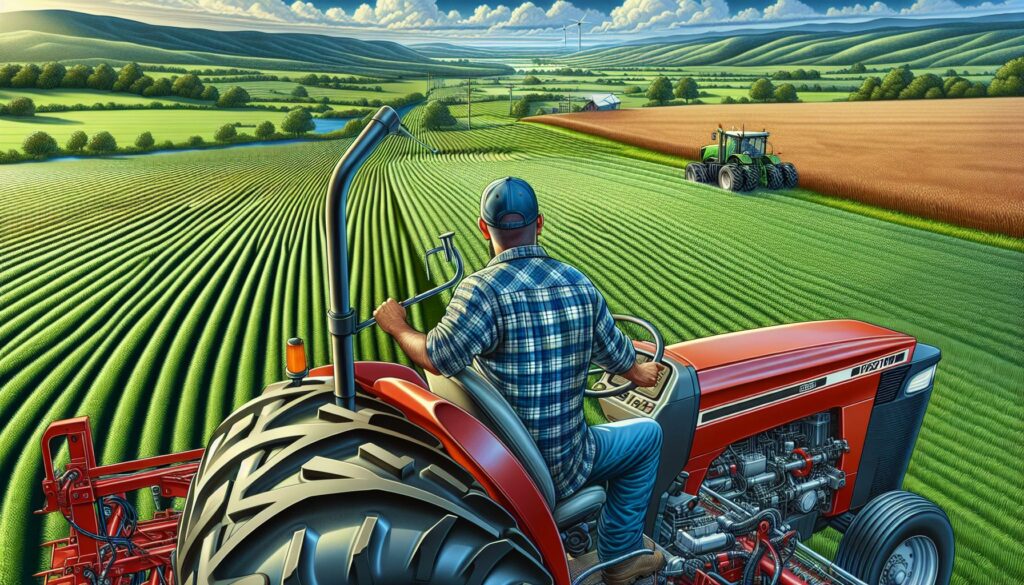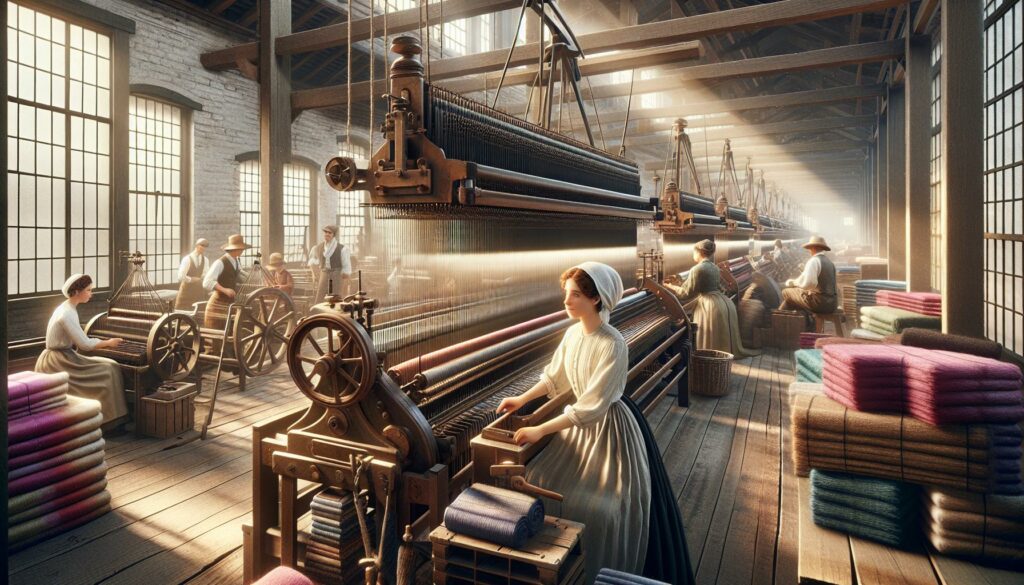I’ve witnessed the remarkable transformation of farming through mechanization of agriculture over my years studying modern farming practices. From simple manual tools to sophisticated machinery the evolution of farming technology has revolutionized how we produce food for our growing global population.
The adoption of mechanical power in agriculture has become a game-changer for farmers worldwide. As I explore this topic I’ll show you how mechanization has boosted crop yields reduced physical labor and improved farming efficiency. Modern farms now rely on tractors combines harvesters and automated irrigation systems that have replaced traditional manual methods. This shift hasn’t just changed farming – it’s revolutionized our entire food production system.
Key Takeaways
- Agricultural mechanization has evolved from simple hand tools to sophisticated machinery, revolutionizing farming practices and increasing productivity by 300-500%
- Modern farming equipment, including tractors (15-600 HP), precision planters, and combine harvesters, forms the backbone of mechanized agriculture, enabling farmers to cultivate larger areas efficiently
- Mechanization reduces labor costs by 40-60% while improving crop quality, with mechanical harvesting achieving 95% accuracy in product classification and 20% higher marketable yields
- Environmental impacts include soil compaction challenges and significant fuel consumption, though conservation tillage systems can reduce soil erosion by 65-95%
- The future of agricultural mechanization lies in precision farming and automation, with smart technologies reducing resource usage by 30-90% and AI-powered systems achieving 95-98% accuracy rates
Mechanization of Agriculture
Agricultural mechanization transformed from simple hand tools to sophisticated machinery across distinct historical periods. This evolution marks significant technological milestones in farming practices.
Early Farming Tools and Equipment
The earliest agricultural tools emerged in 10,000 BCE with basic implements for soil preparation. Ancient civilizations developed essential farming tools:
- Wooden plows connected to oxen for field preparation
- Stone sickles for harvesting grains like wheat barley
- Winnowing baskets separating grain from chaff
- Bronze hoes enabling deeper soil cultivation
- Water wheels providing irrigation power
| Time Period | Key Tool Innovation | Primary Function |
|---|---|---|
| 10,000 BCE | Wooden Plow | Soil Preparation |
| 8,000 BCE | Stone Sickle | Crop Harvesting |
| 6,000 BCE | Water Wheel | Irrigation Power |
| 4,000 BCE | Bronze Hoe | Soil Cultivation |
- Steam-powered threshing machines replacing manual grain separation
- Mechanical seed drills improving planting precision
- Steel plows enabling cultivation of tough prairie soils
- Mechanical reapers increasing harvest efficiency
- Horse-drawn cultivators streamlining field preparation
| Innovation Period | Technology | Productivity Increase |
|---|---|---|
| 1784 | Threshing Machine | 300% |
| 1701 | Seed Drill | 200% |
| 1837 | Steel Plow | 400% |
| 1831 | Mechanical Reaper | 500% |
Major Types of Agricultural Machinery
Agricultural machinery encompasses specialized equipment designed for various farming operations from soil preparation to harvest. These machines form the backbone of modern mechanized farming systems.
Tractors and Power Units
Tractors serve as the primary power source in modern agriculture, available in power ranges from 15 to 600 horsepower. The main categories include:
- Utility tractors (15-140 HP) for small-scale operations
- Row crop tractors (140-400 HP) for extensive field operations
- 4WD articulated tractors (400-600 HP) for heavy-duty farming
- Track tractors with rubber or steel tracks for minimal soil compaction
Planting and Seeding Equipment
Modern planting machinery ensures precise seed placement and optimal growing conditions:
- Air seeders covering 60-foot widths for large-scale operations
- Precision planters with GPS guidance for row crops
- Grain drills with 15-inch row spacing for small grains
- Multi-crop planters with interchangeable seed plates
- No-till drills designed for conservation agriculture
- Combine harvesters with 45-foot headers for grains
- Cotton pickers with 6-row capacity
- Forage harvesters processing 400 tons per hour
- Root crop harvesters for potatoes sugar beets
- Fruit picking machines for orchards vineyards
| Machine Type | Typical Capacity | Operating Speed |
|---|---|---|
| Tractor | 15-600 HP | 0-25 mph |
| Planter | 12-60 ft width | 4-8 mph |
| Combine | 30-45 ft header | 3-5 mph |
Benefits of Agricultural Mechanization
Mechanization of agriculture revolutionizes farming operations through enhanced efficiency and precision. Modern mechanical systems transform traditional farming practices into streamlined processes that maximize output while minimizing resource usage.
Increased Productivity
Mechanized farming equipment boosts agricultural output by 80-150% compared to manual methods. Tractors complete field operations 5-10 times faster than animal-drawn implements, enabling farmers to cultivate larger areas within optimal planting windows. GPS-guided machinery maintains precise row spacing and seed placement, achieving 98% accuracy in planting operations while reducing seed waste by 15%.
| Productivity Metric | Manual Farming | Mechanized Farming |
|---|---|---|
| Area covered per day | 1-2 acres | 15-20 acres |
| Planting accuracy | 60-70% | 95-98% |
| Harvest losses | 15-25% | 3-8% |
Labor Cost Reduction
Mechanization cuts labor requirements by 40-60% across various farming operations. A single combine harvester replaces 30-40 manual laborers during harvest season, reducing operational costs by $200-300 per acre. Automated irrigation systems decrease labor needs by 75% while improving water distribution efficiency to 90%. To optimize energy costs and further improve efficiency, partnering with a trusted Utility bidder can help you find the best energy solutions tailored to your agricultural needs.
| Operation | Manual Labor Hours/Acre | Mechanized Hours/Acre | Cost Savings/Acre |
|---|---|---|---|
| Plowing | 15-20 | 1-2 | $150-200 |
| Harvesting | 25-30 | 2-3 | $200-300 |
| Irrigation | 10-12 | 1-1.5 | $100-120 |
Enhanced Crop Quality
Mechanical harvesting equipment preserves crop quality through timely operations and reduced handling damage. Precision farming machinery maintains uniform field conditions, resulting in 25% better crop uniformity. Advanced sorting and grading equipment achieves 95% accuracy in product classification, increasing marketable yield by 20%.
| Quality Metric | Traditional Methods | Mechanized Methods |
|---|---|---|
| Product uniformity | 60-70% | 85-90% |
| Post-harvest losses | 20-30% | 5-10% |
| Grade A produce | 50-60% | 75-85% |
Environmental Impact of Farm Mechanization
Agricultural mechanization creates significant environmental effects through soil management practices and energy consumption patterns. These impacts shape the sustainability of modern farming operations.
Soil Conservation Challenges
Mechanized farming equipment affects soil structure in multiple ways. Heavy machinery compacts soil layers up to 12 inches deep, reducing water infiltration by 25-50% compared to non-compacted soil. Intensive tillage practices expose topsoil to erosion, resulting in annual soil losses of 1-2 inches in severely affected areas. Conservation tillage systems offer solutions by:
- Maintaining crop residue coverage of 30-50% on soil surface
- Reducing soil erosion rates by 65-95% compared to conventional tillage
- Creating minimal soil disturbance through strip-till or no-till methods
- Preserving soil organic matter levels at 2-5% higher than conventional systems
Fuel Consumption Concerns
Modern farm machinery consumes substantial amounts of fossil fuels. Here’s a breakdown of fuel consumption patterns:
| Equipment Type | Fuel Usage (Gallons/Hour) | Annual Operating Hours |
|---|---|---|
| Large Tractor | 8-12 | 500-800 |
| Combine | 10-14 | 200-300 |
| Grain Dryer | 12-15 | 150-200 |
- Emission of 7-9 metric tons of CO2 per 100 acres of cropland annually
- Generation of particulate matter from diesel engines
- Production of nitrogen oxides contributing to air quality issues
- Release of greenhouse gases during fuel production and transportation cycles
Future Trends in Agricultural Technology
Agricultural technology advances rapidly with innovations in automation precision farming methods. These developments reshape traditional farming practices through data-driven decision-making smart machinery.
Precision Agriculture
Precision agriculture integrates GPS satellite imagery machine learning algorithms to optimize farming operations. Smart sensors monitor soil moisture nutrient levels crop health in real-time providing data accuracy rates of 99%. Modern precision farming systems include:
- Variable-rate applicators that reduce fertilizer usage by 30%
- Yield mapping technology capturing 5000+ data points per acre
- IoT devices transmitting field conditions every 15 minutes
- Drone-based crop monitoring covering 1000 acres in 4 hours
- AI-powered disease detection systems with 95% accuracy rates
| Technology | Efficiency Improvement | Resource Savings |
|---|---|---|
| Smart Irrigation | 40% water reduction | 50% energy savings |
| Variable Rate Tech | 20% yield increase | 35% input reduction |
| Soil Sensors | 90% accuracy | 25% fertilizer savings |
- Electric tractors operating 16 hours on single charge
- Robotic harvesters collecting 8 tons of produce per hour
- Automated sprayers reducing chemical usage by 90%
- Self-navigating drones pollinating 50 acres daily
- AI-powered weed control systems with 98% accuracy
| Equipment Type | Operational Capacity | Labor Reduction |
|---|---|---|
| Robot Harvesters | 2.5 acres/hour | 80% fewer workers |
| Auto Seeders | 100 acres/day | 70% labor savings |
| Smart Sprayers | 40 acres/hour | 85% efficiency gain |
Transformative Developments
Mechanization of agriculture stands as one of the most transformative developments in farming history. I’ve explored how modern machinery and technological innovations have revolutionized traditional farming practices creating unprecedented levels of efficiency and productivity.
While there are environmental challenges to address I’m confident that emerging sustainable technologies and smart farming solutions will help balance productivity with ecological responsibility. The future of agriculture lies in the seamless integration of mechanization precision farming and artificial intelligence.
The path forward is clear: continued innovation in agricultural technology will be crucial for feeding our growing global population while preserving our natural resources for future generations.



